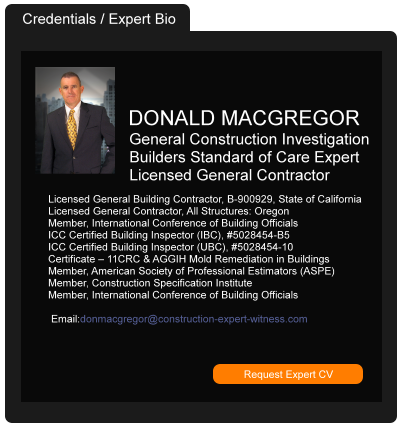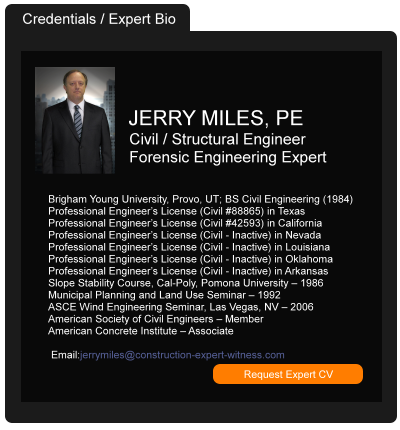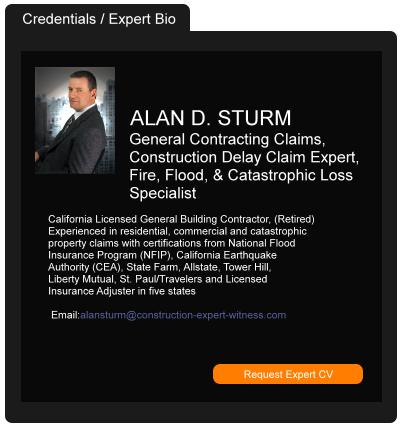Billion-Dollar Power Lines Finally Inching Ahead to Help US Grids
April 03, 2023 —
Brian Eckhouse, Naureen S Malik & Dave Merrill - BloombergThe biggest impediment to the US achieving a cleaner power grid isn't climate deniers or fossil-fuel lobbies; it’s a lack of transmission lines. The country badly needs more conduits to cart wind and solar energy and hydropower to cities.
For more than a decade, multibillion-dollar power-line projects have struggled to advance, slowed or halted by bureaucracy, NIMBYism or general industry stasis. Now suddenly, several are progressing — and with them the prospect of newly unleashed clean energy as well as more resilient grids in the face of ever-dangerous storms and extreme heatwaves.
There’s SunZia in the Southwest, TransWest Express in the Mountain West, Grain Belt Express to the Midwest, and Champlain Hudson Power Express into New York City — projects that together will cost at least $13 billion. Some are now ordering expensive equipment, a signal of their advancement. SunZia and TransWest expect to begin construction this year.
Reprinted courtesy of
Brian Eckhouse, Bloomberg,
Naureen S Malik, Bloomberg and
Dave Merrill, Bloomberg Read the court decisionRead the full story...Reprinted courtesy of
Unions Win Prevailing Wage Challenge Brought By Charter Cities: Next Stop The Supreme Court?
April 06, 2016 —
Steven M. Cvitanovic & Sarah A. Marsey – Haight Brown & Bonesteel LLPIn City Of El Centro v. David Lanier (State Building And Construction Trades Council Of California, AFL-CIO), the 4th appellate district upheld by a 2-1 majority the constitutionality of Labor Code section 1782, which prohibits a charter city from receiving or using state funding or financial assistance for a public construction project if the city has a charter provision or ordinance that authorizes a contractor to not comply with the state prevailing wage laws.
As we wrote on this topic back in 2012 (See alert here), charter cities are governed by a municipal constitution and may make and enforce its own ordinances and regulations with respect to municipal affairs (i.e., the ‘home rule’ doctrine), as opposed to general law cities, which must comply with the state laws such as the Public Wage Rate Act (requiring municipalities to pay prevailing wages).
The California Supreme Court previously held in State Building and Construction Trade Council of California, AFL-CIO v. City of Vista that the ‘home rule’ rule permits charter cities not to pay prevailing wages to its contract workers on locally funded public works because such determination is a municipal affair and not a statewide concern.
Reprinted courtesy of
Steven M. Cvitanovic, Haight Brown & Bonesteel LLP and
Sarah A. Marsey, Haight Brown & Bonesteel LLP
Mr. Cvitanovic may be contacted at scvitanovic@hbblaw.com
Ms. Marsey may be contacted at smarsey@hbblaw.com
Read the court decisionRead the full story...Reprinted courtesy of
Not All Design-Build Projects are Created Equal
June 28, 2021 —
Nicole Markowitz & Richard Robinson - Peckar & Abramson, P.C.As the need for faster and more efficient construction increases, design-build agreements are growing in popularity. Design-build projects may account for 44% of nonresidential building in the United States this year. However, contractors who venture into a “design builder” role may unexpectedly become liable for design errors/omissions that are not covered by their insurance policies. In turn, they may expose themselves to liability and insurance risks that are neither insured nor managed.
In this article, we’ll discuss how the contractor who becomes a design-builder, or performs design-related work through subcontractors, faces potentially unmanaged risk. We will also explore indemnity, warranty, and insurance traps by paying attention to contract language in both traditional design-build and design-assist scenarios.
Reprinted courtesy of
Nicole Markowitz, Peckar & Abramson, P.C. and
Richard Robinson, Peckar & Abramson, P.C.
Ms. Markowitz may be contacted at nmarkowitz@pecklaw.com
Mr. Robinson may be contacted at rrobinson@pecklaw.com
Read the court decisionRead the full story...Reprinted courtesy of
Court Provides Guidance on ‘Pay-When-Paid’ Provisions in Construction Subcontracts
July 13, 2020 —
Ted R. Gropman & Cindy J. Lee - ConsensusDocsOn April 17, the California Court of Appeal decided Crosno Construction, Inc. v. Travelers Casualty & Surety Company of America,1 effectively narrowing the scope of enforceable “pay-when-paid” provisions in construction subcontracts to the extent the subcontractor seeks recovery against a general contractor’s payment bond surety. Although the Crosno case involved a public works project, the rationale and holding should apply with equal force to private works projects. Basing the bulk of its decision on the Wm. R. Clarke Corp. v. Safeco Insurance Co.2 case, the court found that an open-ended “pay-when-paid” provision in a subcontract is not enforceable against a subcontractor that seeks to recover on a public works payment bond claim. This article discusses the Crosno decision and the implications for contractors on both sides of the contract moving forward.
Brief Case Summary
In Crosno, general contractor Clark Bros., Inc. contracted with the North Edwards Water District (the District) to build an arsenic removal water treatment plant. Clark hired steel storage tank subcontractor Crosno Construction, Inc. to build and coat two steel reservoir tanks. Clark and Crosno’s subcontract included a “pay-when-paid” provision, which stated that Clark would pay Crosno within a “reasonable time” of receiving payments from the owner, but “in no event less than the time Contractor and Subcontractor require to pursue to conclusion their legal remedies against Owner or other responsible party to obtain payment.” After Crosno completed its work, a dispute arose between Clark and the District, and the District withheld payment from Clark (including the monies earmarked for Clark’s subcontractors). Clark sued the District for payment, and Crosno filed its own action against Travelers Casualty and Surety Company of America, the surety on Clark’s statutory public works payment bond, for recovery of the unpaid subcontract balance. Travelers rejected Crosno’s bond claim as premature, invoking the “pay-when-paid” subcontract language and pointing to Clark’s pending payment action against the District. The issue on appeal was whether the “pay-when-paid” provision in the subcontract blocked Crosno from recovering under the payment bond from Travelers while Clark’s lawsuit against the District was still pending.
Reprinted courtesy of
Ted R. Gropman, Pepper Hamilton LLP and
Cindy J. Lee, Pepper Hamilton LLP
Mr. Gropman may be contacted at ted.gropman@troutman.com
Ms. Lee may be contacted at cindy.lee@troutman.com
Read the court decisionRead the full story...Reprinted courtesy of
“Slow and Steady Doesn’t Always Win the Race” – Applicability of a Statute of Repose on Indemnity/Contribution Claims in New Hampshire
November 24, 2019 —
Rahul Gogineni - The Subrogation StrategistIn Rankin v. South Street Downtown Holdings, Inc., 2019 N.H. LEXIS 165, the Supreme Court of New Hampshire considered, pursuant to a question transferred by the trial court, whether RSA 508:4-b, the statute of repose for improvements to real property, applies to indemnity and contribution claims. The court concluded that based upon the plain reading of the statute, it applies to indemnity and contribution claims. As noted by the court, a holding to the contrary would violate the intent of a statute of repose, which is to establish a time limit for when a party is exposed to liability.
In Rankin, after falling and injuring himself while leaving a building, John Rankin and his wife brought an action against the property owner, South Street Downtown Holding, Inc. (South Street) in 2017. South Street subsequently filed a third-party complaint against multiple parties including an architectural company, Wagner Hodgson, Inc. (Wagner), who was involved in a renovation project at the property. The project was substantially complete in 2009. Wagner responded by moving to dismiss the action, arguing that South Street’s indemnification and contribution claims were barred by the applicable statute of repose.
RSA 508:4-b specifically states,
Except as otherwise provided in this section, all actions to recover damages for injury to property, injury to the person, wrongful death or economic loss arising out of any deficiency in the creation of an improvement to real property, including without limitation the design, labor, materials, engineering, planning, surveying, construction, observation, supervision or inspection of that improvement, shall be brought within 8 years from the date of substantial completion of the improvement, and not thereafter. (Emphasis added).
Read the court decisionRead the full story...Reprinted courtesy of
Rahul Gogineni, White and Williams LLPMr. Gogineni may be contacted at
goginenir@whiteandwilliams.com
How the Parking Garage Conquered the City
January 09, 2023 —
Andrew Zaleski - BloombergUncertainty overcame owners of several Manhattan parking garages in September. A plan to implement congestion pricing — charging drivers to enter a zone south of 60th Street — could lead to more transit usage by commuters, and thus the closure of some parking garages, The City reported. Parking options have already been on the wane in the largest US city: The NYC Department of Consumer Affairs and Worker Protection counted more than 2,200 licenses for garages and lots in 2015, a number that fell to 1,899 by 2021.
For most urban residents, if not outer-borough drivers, that decline is reason to cheer. The parking garage — a big, concrete-gray box for cars — is a notorious bane of urban vitality.
City after city, desperate to lure suburbanites downtown to work or shop, bulldozed prime real estate to build these structures in the postwar era, turning central business districts into vehicle-storage voids that sapped streets of pedestrian energy and hollowed out neighborhoods. Building codes that mandated a certain number of parking spaces have kept new garages coming: In suburbs, exurbs and towns across the US, you will find these facilities, squatting beside shopping centers and stadiums, airports and office parks, planned communities and amusement parks.
Read the court decisionRead the full story...Reprinted courtesy of
Andrew Zaleski, Bloomberg
Home Prices Beat Estimates With 0.8% Gain in November
January 28, 2015 —
Prashant Gopal – Bloomberg(Bloomberg) -- U.S. home prices rose more than economists estimated in November, a sign job growth is helping to boost housing demand.
Prices climbed 0.8 percent on a seasonally adjusted basis from October, the Federal Housing Finance Agency said in a report from Washington. The average economist estimate was for a 0.3 percent increase, according to data compiled by Bloomberg. Prices increased 5.3 percent from November 2013.
Read the court decisionRead the full story...Reprinted courtesy of
Prashant Gopal, BloombergMr. Gopal may be contacted at
pgopal2@bloomberg.net
Why Biden’s Infrastructure Plan Is a Green Jobs Plan
April 26, 2021 —
Gernot Wagner - Bloomberg“Once you put capital money to work, jobs are created.”
These are not the words of President Joe Biden, announcing his administration’s infrastructure plan in Pittsburgh on Wednesday. Nor were they the words of Transportation Secretary Pete Buttigieg, standing on a train platform to announce expanded service, or of any of the administration’s economists charged with touting the virtues of the $2.25 trillion spending plan.
It was Michael Morris, then-CEO of Ohio utility American Electric Power, who uttered them on an investor call a decade ago. AEP was fighting an Environmental Protection Agency proposal to reduce mercury and other pollutants from power plants, citing the expense of creating jobs to install new scrubbers on smokestacks or build cleaner plants. Morris, taking his fiduciary responsibility to the utility’s investors seriously, argued these new roles would come at a cost to AEP and were, thus, bad. What he did not question, and correctly so, was whether more investments would indeed create more jobs.
Read the court decisionRead the full story...Reprinted courtesy of
Gernot Wagner, Bloomberg


































































